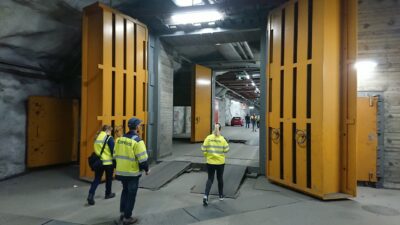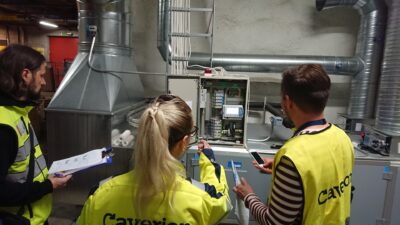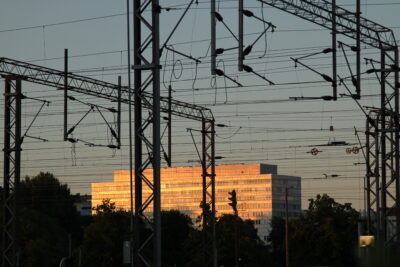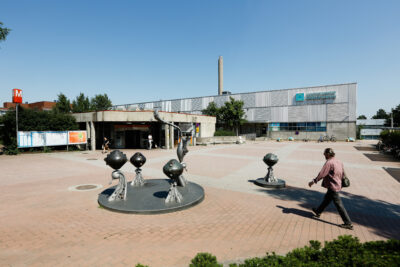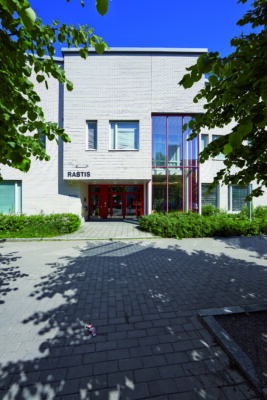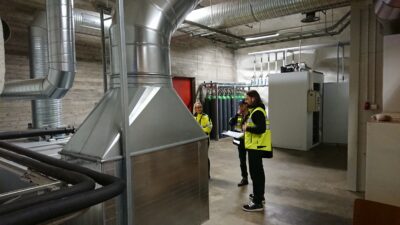Demand response means changes in electricity consumption in accordance with the needs of the electric power grid. In service buildings of the City of Helsinki, the pilot of Nuuka Solutions Oy verified how indoor air behaved in demand response. In addition, Nuuka developed a model of a virtual power plant for the City of Helsinki’s service properties.
The City of Helsinki has a large number of properties, and they may have a significant demand response potential. In this pilot, Nuuka Solutions specifically studied the effect of demand response on the indoor air of the buildings, in summer and during the school terms. Sensors developed by Smartwatcher were installed in the pilot buildings. The sensors measured indoor air quality, such as temperature, humidity and carbon dioxide concentration. In practice, the pilot adjusted the consumption of the ventilation machines of the service properties, via a control room. The adjustment times in demand response are usually less than three minutes.
Partners
City of Helsinki
Nuuka Solutions Oy
VTT
Helen Oy
Fingrid Oy
Smartwatcher Oy
Challenges
The consumption and generation of electricity vary a great deal at different times. The adjustment of the electric power grid in Finland is attended to by Fingrid on the balancing power market. By adjusting electricity consumption, the consumption and generation of electricity can momentarily be brought into balance. In addition, demand response could also promote the cutting down of power peaks in energy production. This way, it could be possible to reduce the need to run polluting spare power plants. There are very different building automation systems in service properties owned by the City of Helsinki. It must be possible to steer these systems if the idea is to make the buildings participate in the demand response of electricity and form a virtual power plant.
Objectives
With the help of the energy and conditions system developed by Nuuka Solutions, the objective is to develop a virtual power plant concept for the City of Helsinki, taking into account the reporting of energy and conditions measurements, as well as the verification of the technical building processes. The aim, with the help of the piloting, was to develop the concept of a virtual power plant in buildings owned by the City of Helsinki, making it also useful elsewhere in Finland and abroad. The intention was to investigate how the service buildings would be able to participate in a national balancing power market, as well as to reduce electricity consumption in the City of Helsinki’s service properties. This means, for example, that according to Fingrid, the energy consumption of the City of Helsinki’s service properties can momentarily be adjusted without weakening the conditions.
Results
The result was a technical operating model – tested together by the City of Helsinki and Nuuka Solutions – that will be used in order to launch the demand response potential of the service buildings to Fingrid’s FCR-N market. In addition to ensuring technical performance, the potential of the City of Helsinki’s properties for the demand response of electricity was also assessed. In addition, Nuuka Solutions summarised the results regarding how the indoor conditions of the selected service buildings reacted during the demand response when the ventilation machines were adjusted.
Matters learned so far
On the basis of the results obtained from the pilots, it was stated that demand response can be carried out in the City of Helsinki’s service properties both technically and from the perspective of user convenience, also during the heating season. However, the performance of the technical solutions requires a great deal of work in the initial phase and it was learned during the experiment that it was important to cooperate with the energy company. Furthermore, it can be stated, based on the data produced by Nuuka, that demand respond does not jeopardise indoor air conditions when a quick adjustment of ventilation is carried out. It was also learned that when carrying out even large adjustments, the CO2 levels and temperature in the pilot buildings changed slowly. However, it is important that the matter was studied thoroughly and the buildings function safely, securely and in a healthy way and that their users are satisfied.
It became clear during the pilot that the City of Helsinki has a large building stock that enables a major income flow in the demand response market, as well as a great reduction in carbon dioxide emissions. With the help of the pilot, Nuuka Solutions was able to develop its product significantly and find new business opportunities.

